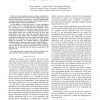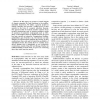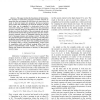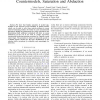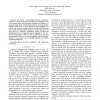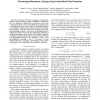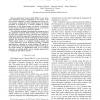140
Voted
CSFW
2012
IEEE
13 years 3 months ago
2012
IEEE
—Social sign-on and social sharing are becoming an ever more popular feature of web applications. This success is largely due to the APIs and support offered by prominent social ...
124
click to vote
CSFW
2012
IEEE
13 years 3 months ago
2012
IEEE
—Formal methods have proved their usefulness for analysing the security of protocols. In this setting, privacy-type security properties (e.g. vote-privacy, anonymity, unlinkabili...
131
click to vote
CSFW
2012
IEEE
13 years 3 months ago
2012
IEEE
—In this paper, we propose a formal analysis of domain extenders for hash functions in the indifferentiability framework. We define a general model for domain extenders and prov...
113
Voted
CSFW
2012
IEEE
13 years 3 months ago
2012
IEEE
Abstract—This paper studies the foundations of informationflow security for interactive programs. Previous research assumes that the environment is total, that is, it must alway...
123
Voted
CSFW
2012
IEEE
13 years 3 months ago
2012
IEEE
—We show that Kripke semantics of modal logic, manifest in the syntactic proof formalism of labeled sequent calculi, can be used to solve three central problems in access control...
132
Voted
CSFW
2012
IEEE
13 years 3 months ago
2012
IEEE
—We present a secure (fully abstract) compilation scheme to compile an object-based high-level language to lowchine code. Full abstraction is achieved by relying on a fine-grain...
109
click to vote
CSFW
2012
IEEE
13 years 3 months ago
2012
IEEE
Abstract—This paper introduces g-leakage, a rich generalization of the min-entropy model of quantitative information flow. In g-leakage, the benefit that an adversary derives f...
140
click to vote
CSFW
2012
IEEE
13 years 3 months ago
2012
IEEE
The onion routing network Tor is undoubtedly the most widely employed technology for anonymous web access. Although the underlying onion routing (OR) protocol appears satisfactory...
115
click to vote
CSFW
2012
IEEE
13 years 3 months ago
2012
IEEE
—Tracking information flow in dynamic languages remains an important and intricate problem. This paper makes substantial headway toward understanding the main challenges and res...
135
click to vote
CSFW
2012
IEEE
13 years 3 months ago
2012
IEEE
—Role-based Access Control (RBAC) is one of the most widespread security mechanisms in use today. Given the growing complexity of policy languages and access control systems, ver...

